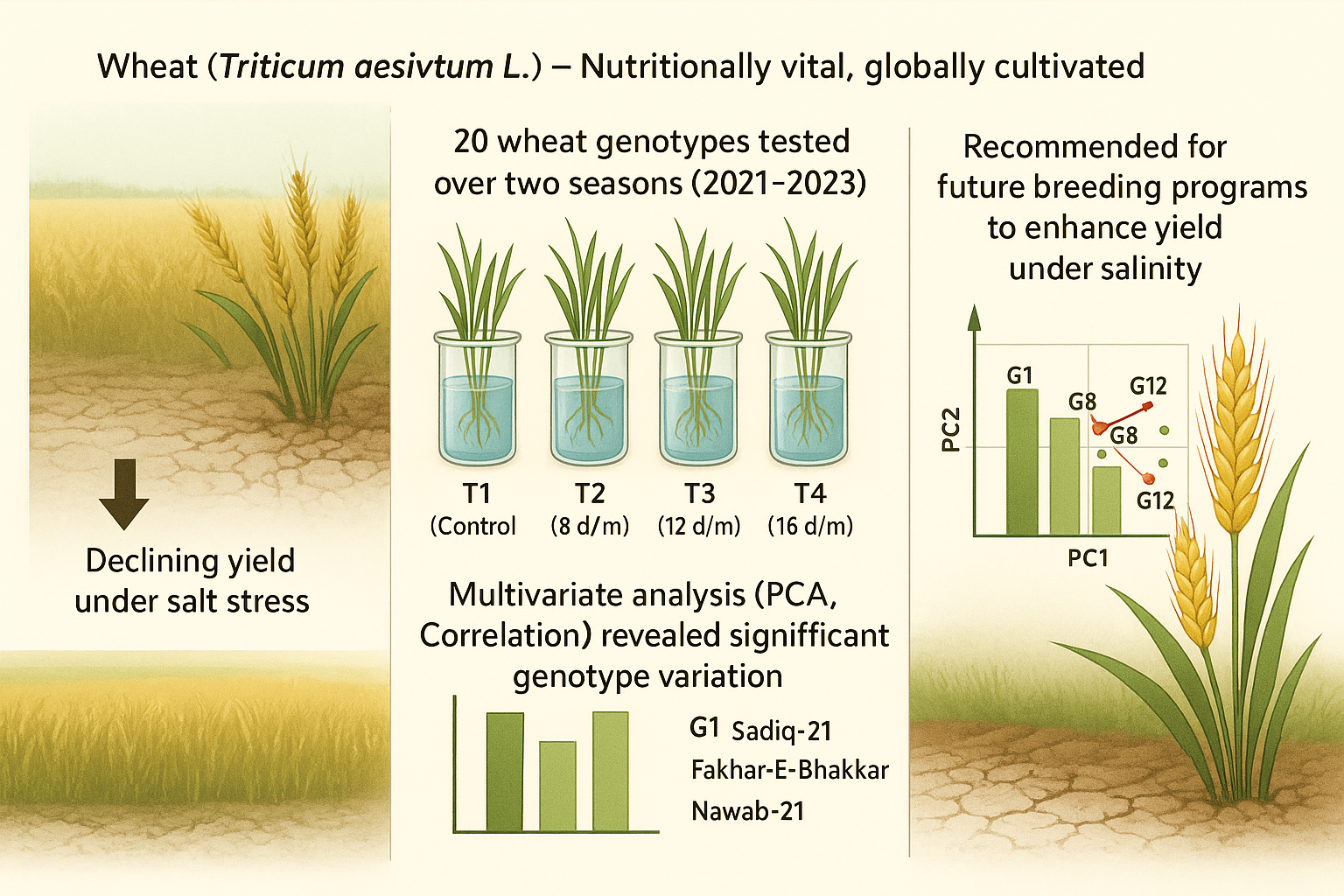
Abstract
Wheat (Triticum aestivum L.) is a cereal crop cultivated around the world. It is an important crop for human due to its high nutritional value. The overall production of wheat is decreasing every day while its consumption has increased. Salt stress is an important abiotic stressor affecting wheat from growth to harvest. It is main factor limiting wheat output, development, and growth. The current study used 20 diverse wheat genotypes for two consecutive growing seasons in 2021-2022 and 2022-23, to assess their salt tolerance potential against four treatment levels (control, 8dS/m, 12dS/m and 16 dS/m) using various quantitative attributes like plant height (PH), peduncle length (PL), spike length (SL), flag leaf area (FLA), chlorophyll content (CC), grain length (GL), grain width (GW), grain area (GA), thousand grain weight (TGW) and yield per plant (YPP). Significant amount of differences in genetic diversityamong genotypes using studied traits was observed. Correlation analysis showed a positive association of these traits among each other under all treatment conditions. Principal component analysis (PCA) revealed that, among the 10 PCs, only two had eigenvalues >1 and were significant across all treatments cumulatively accounting for 70.49%, 60.67%, 60.62% and 51.562% of the total variation under T1 (control), T2 (8dS/m), T3 (12dS/m) and T4 (16dS/m) conditions respectively. Additionally, the biplot result of PCA revealed Sadiq-21 (G1), Fakhar-E-Bhkkar (G8) and Nawab-21 (G12) as potential salt tolerant genotypes. In order to produce high yielding and salt tolerant genotypes, future wheat breeding programs may utilize the tolerant genotypes with salt tolerance potential.
Total file downloads: 18